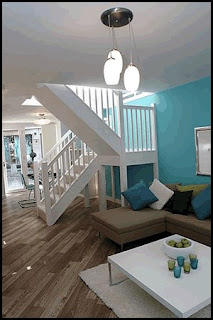
Though U.S. home values have dropped for the 10th consecutive quarter, homeowners in some parts of the nation are seeing prices appreciating.
Countrywide, second-quarter values fell 12.1% year-over-year to $186,500. This is a 22.3% drop in value since the mid-2006 market peak, according to Zillow.com's Second-Quarter Real Estate Market Report. The real estate research firm's Home Value Index measures the value of all homes in a metropolitan statistical area or metro, not only those that sold in the measured period.
But Fayetteville, N.C., posted a Q2 2009 $120,600 median home value, up 13.4% over a year ago. In Oklahoma City, values rose in the last year 4.8% to $118,700. Further north, in Binghamton, N.Y., the $112,300 median value is 4.5% higher than it was a year ago. A relatively low percentage of June foreclosure resales--11.9% in Fayetteville and 4% in Oklahoma City--and percent of mortgages in negative equity--16.2% and 14.9%, respectively--likely contributed to the boost in home values.
Skies aren't as bright in California, epicenter of the home-construction boom and bust. Four of the state's metros--Merced, El Centro, Madera and Modesto--posted declines of between 30% and 40%. In these areas, the sheer amount of foreclosures is depressing home values. In Merced and Madera, for example, foreclosure resales dominate home purchases, at 77.4% and 71%, respectively, for all June sales.
What's more, these areas have high concentrations of homeowners with underwater mortgages (the situation in which the homeowner owes more than what the home is actually worth). These high rates, coupled with Merced's 18.8% unemployment and Madera's 9.6%, means more foreclosures are likely on the horizon.



 Clear space in basement. You will need at least 6m2 of clear space.
Clear space in basement. You will need at least 6m2 of clear space.








 Design anything easily:
Design anything easily:




 It can be quite a challenge to decorate a small apartment or room. With careful research and planning you can create a great outcome with a combination of style and comfort. The most important aspect to keep in mind in home decoration is to plan in such a way that you make use of the existing space without overwhelming the area.
It can be quite a challenge to decorate a small apartment or room. With careful research and planning you can create a great outcome with a combination of style and comfort. The most important aspect to keep in mind in home decoration is to plan in such a way that you make use of the existing space without overwhelming the area.








